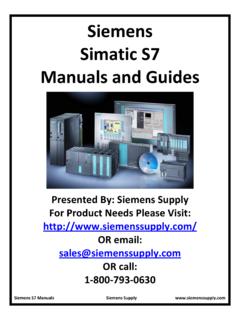Transcription of PLC Handbook - AutomationDirect
1 Practical Guide to programmable logic Controllers PLC Handbook ContentsPLC Handbook2 Chapter 1 -What is a PLCC hapter 2 -History of the PLCC hapter 3 -How to Choose a ControllerChapter 4 -PLC HardwareCollection of PLC Application Stories Chapter -6 Practical PLC Topics6-1 Methods Behind PID Loop Control -------------6-2 PLC Communication -Coming of Age----------6-3 EtherNet/IP: Implicit vs. Explicit Messaging--6-4 Motion Control Explained --------------------------p. 48p. 49 p. 54p. 58p. 61 Chapter -5 PLC Software5-1 Understanding Ladder logic --------------------5-2 Basic Instructions in Ladder logic -------------5-3 Ladder logic in Action ----------------------------p.
2 20p. 27p. 29p. 36p. 3 p. 5p. 10p. 14p. 663 PLC HandbookWhat is a logic Controllers (PLC) are often defined as miniature industrial computers that contain hardware and software used to perform control functions. More specifically, a PLC would be used for the automation of industrial electromechanical processes, such as control of machinery on factory assembly lines, amusement rides, or food processing. They are designed for multiple arrangements of digital and analog inputs and outputs with extended temperature ranges, immunity to electrical noise, and resistance to vibration and impact.
3 A PLC will consist of two basic sections: the central processing unit (CPU) and the Input/Output (I/O) interface CPU controls all system activity primarily through its processor and memory system. The CPU consists of a microprocessor, memory chip and other integrated circuits to control logic , monitoring and communications. The CPU has different operating modes. In programming mode the CPU will accept changes to the downloaded logic from a PC. When the CPU is placed in run mode it will execute the program and operate the process. Input data from connected field devices ( , switches, sensors, etc.)
4 Is processed, and then the CPU executes or performs the control program that has been stored in its memory system. Since a PLC is a dedicated controller it will process this one program over and over again. The time it takes for one cycle through the program is called scan time and happens very quickly (in the range of 1/1000th of a second, depending on your program). The memory in the CPU stores the program while also holding the status of the I/O and providing a means to store 14 PLC HandbookThe input/output system is physically connected to field devices and provides the interface between the CPU and its information providers (inputs) and controllable devices (outputs).
5 After the CPU processes the input data (input scan), it will then make any needed output changes after executing the user program (output scan). There are four basic steps in the operation of all PLCs: Input Scan, Program Scan, Output Scan, and Housekeeping. These steps continually take place in a repeating loop. Input Scan Detects the state of all input devices that are connected to the PLC Program Scan Executes the user created program logic Output Scan Energizes or de-energizes all output devices that are connected to the PLC Housekeeping Includes communicating with programming devices and performing internal diagnosticsTypical PLCs have a wide range of I/O modules available to accommodate all kinds of sensors and output devices.
6 For example, discrete input modules can be used to detect object presence or events with devices such as proximity or photoelectric sensors, limit switches and pushbuttons. Discrete output modules can control ON/OFF loads such as motors, lights, and solenoid valves. Analog input modules can accept signals from process instrumentation such as flow, pressure, temperature and level transmitters. These modules can interpret the signal and present a value within a range determined by the devices electrical specifications. Analog outputs will command loads that require a varying control signal, such as panel meters, variable frequency drives or analog flow valves.
7 Many PLCs also offer specialized modules such as high-speed I/O or motion control, and serial or Ethernet greatest benefit of automating with a programmable logic controller is the ability to repeat or change and replicate the operation or process while collecting and communicating vital information. Those making the buying decisions for programmable controller applications can have very different needs. Cost, power, speed, and communication are a few of the many considerations when choosing the right PLC for the job. What Is a PLC?Learn Watch The Video! HandbookHistory of the PLCThe PLC or programmable logic controller has revolutionized the automation industry.
8 Today PLCs can be found in everything from factory equipment to vending machines, but prior to New Year s Day 1968 the programmable controller didn t even exist. Instead what existed was a unique set of challenges that needed a solution. In order to understand the history of the PLC we must first take some time to understand the problems that existed before programmable 2 Before the programmable ControllerBefore the days of the PLC the only way to control machinery was through the use of relays. Relays work by utilizing a coil that, when energized, creates a magnetic force to effectively pull a switch to the ON or OFF position.
9 When the relay is de-energized, the switch releases and returns the device to its standard ON or OFF position. So, for example, if I wanted to control whether a motor was ON or OFF, I could attach a relay between the power source and the motor. Then I can control whether the motor is getting power by either energizing or de-energizing the relay. Without power, of course, the motor would not run, thus I am controlling the motor. This type of relay is known as a power relay. There could be several motors in one factory that need to be controlled, so what do you do? You add lots of power relays.
10 So factories started to amass electrical cabinets full of power relays. But wait, what switches the coil in the power relays ON and OFF before the power relay turns the motor ON, and what if I want to control that? What do you do? More relays. These relays are known as control relays because they control the relays that control the switch that turns the motor ON and OFF. I could keep going, but I think you get the picture of how machines were controlled pre-PLC, and, more importantly, I think you start to see some of the problems with this system of electromechanical control via of SignalheadviaWikimedia Commons6 PLC HandbookThe Problem with RelaysThink about modern factories, and how many motors and ON/OFF power switches you would need to control just one machine.




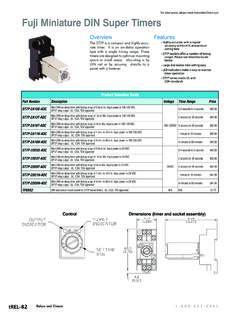



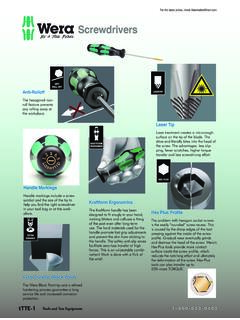


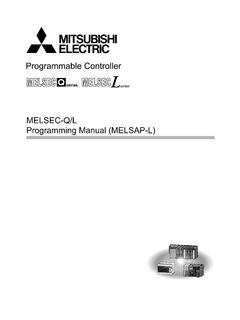
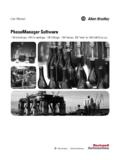
![FXCPU Structured Programming Manual [Device & Common]](/cache/preview/9/4/7/8/3/8/3/1/thumb-94783831776d09386da6cbb173745dcd.jpg)
